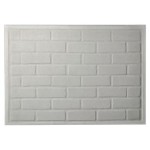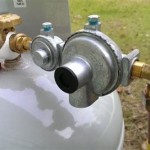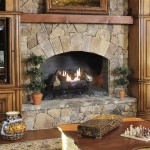```html
Outdoor Fireplace Wood Burning: A Comprehensive Guide
An outdoor fireplace offers a compelling blend of ambiance, warmth, and culinary possibilities, transforming patios and backyards into inviting spaces for relaxation and entertainment. The heart of this experience lies in the fire itself, necessitating a thorough understanding of wood burning practices to ensure safety, efficiency, and overall enjoyment. This article provides a comprehensive guide to outdoor fireplace wood burning, covering essential aspects from wood selection to fire management.
The allure of a crackling fire on a cool evening is undeniable. An outdoor fireplace provides a focal point for gatherings, extending the usability of outdoor spaces beyond the warmer months. Beyond aesthetics, outdoor fireplaces can also serve practical purposes, such as cooking or providing a source of supplemental heat. However, responsible operation is crucial to prevent hazards and maximize the benefits.
Careful planning and consideration are paramount before initiating wood burning in an outdoor fireplace. Understanding local regulations, safety precautions, and best practices will contribute to a safe and enjoyable experience. This guide aims to equip individuals with the knowledge necessary to navigate the nuances of outdoor fireplace wood burning responsibly.
Selecting the Right Wood for Your Outdoor Fireplace
The type of wood used significantly impacts the quality of the fire. Understanding the characteristics of different wood varieties is essential for achieving optimal heat output, minimizing smoke production, and ensuring safe operation. The moisture content of the wood is a crucial factor to consider.
Seasoned vs. Green Wood: Seasoned wood, which has been properly dried for an extended period (typically six months to a year), is the preferred choice for outdoor fireplaces. Seasoning reduces the moisture content to 20% or less, allowing the wood to burn cleanly and efficiently. Green wood, on the other hand, contains a high moisture content, resulting in excessive smoke, reduced heat output, and the potential for creosote buildup in the chimney. Creosote is a flammable substance that can increase the risk of chimney fires.
Hardwoods vs. Softwoods: Hardwoods, such as oak, maple, ash, and birch, are generally denser than softwoods and burn longer and hotter. They produce less smoke than softwoods when properly seasoned. Softwoods, such as pine, fir, and cedar, ignite easily and burn quickly, making them suitable for kindling but less desirable as the primary fuel source. Softwoods also tend to produce more smoke and creosote due to their higher resin content.
Specific Wood Types: Specific wood types offer varying characteristics. Oak, for example, is a dense hardwood that provides long-lasting heat. Maple is another good choice, offering a consistent burn and moderate smoke production. Fruit woods, such as apple and cherry, can impart a pleasant aroma when burned. Avoid burning treated lumber, painted wood, or any materials containing chemicals, as these can release harmful toxins into the air.
Proper Storage: Once you have selected the appropriate wood, proper storage is essential to maintain its quality. Store wood in a dry, well-ventilated area, elevated off the ground, and covered to protect it from rain and snow. This will prevent the wood from reabsorbing moisture and ensure it remains properly seasoned. A wood rack or shed is ideal for storing firewood.
Essential Safety Measures for Outdoor Fireplace Operation
Safety should be the paramount concern when operating an outdoor fireplace. Taking appropriate precautions can prevent accidents, injuries, and property damage. Fire safety protocols should be strictly adhered to at all times.
Clearance and Location: Ensure the fireplace is located a safe distance from flammable materials, such as trees, shrubs, fences, and buildings. A minimum clearance of 10 feet is generally recommended. Avoid placing the fireplace under overhanging branches or near dry vegetation. Check local regulations for specific clearance requirements.
Supervision: Never leave a fire unattended. Designate a responsible adult to supervise the fire at all times. Children and pets should be kept a safe distance from the fireplace. A fire extinguisher or a readily available water source should be nearby in case of an emergency. Ensure everyone present understands the potential hazards associated with open flames.
Spark Arrestor: Equip the fireplace with a spark arrestor to prevent embers from escaping and potentially igniting surrounding vegetation. A spark arrestor is a mesh screen that covers the chimney opening, capturing sparks and reducing the risk of wildfires. Regularly inspect and clean the spark arrestor to ensure it remains effective.
Controlling the Fire: Build fires gradually, starting with a small amount of kindling and adding wood as needed. Avoid overloading the fireplace with excessive amounts of wood. Use a poker or other fire tool to safely adjust the logs and maintain an even burn. Be mindful of wind conditions, as strong winds can cause embers to spread more easily.
Extinguishing the Fire: When finished, extinguish the fire completely by dousing it with water and stirring the embers until they are cool to the touch. Ensure that all embers are extinguished before leaving the area. Do not simply let the fire burn out on its own, as this can take a long time and increase the risk of rekindling. Dispose of ashes properly in a metal container, away from flammable materials.
Efficient Fire Management Techniques
Efficient fire management not only conserves wood but also reduces smoke production and maximizes heat output. Mastering these techniques will enhance the overall outdoor fireplace experience.
Building the Fire: Start with a solid foundation of kindling, such as small twigs, dry leaves, or shredded paper. Arrange the kindling in a teepee or log cabin formation, allowing for ample airflow. Add small pieces of wood gradually, building the fire slowly. Avoid using flammable liquids, such as gasoline or kerosene, to start the fire, as these can be dangerous and unpredictable.
Airflow Management: Proper airflow is essential for efficient combustion. Ensure that the fireplace has adequate ventilation by opening dampers or vents. Adjust the airflow as needed to maintain a steady flame and minimize smoke production. If the fire is producing excessive smoke, increase the airflow. If it is burning too quickly, reduce the airflow.
Log Placement: Arrange the logs in a way that promotes efficient burning. Avoid stacking the logs too tightly together, as this can restrict airflow and lead to smoldering. Leave space between the logs to allow for proper combustion. Consider using the "top-down" burning method, where larger logs are placed at the bottom and kindling is placed on top. This method can reduce smoke production and promote a more even burn.
Monitoring and Adjustment: Regularly monitor the fire and make adjustments as needed. Use a poker to rearrange the logs or add more wood as necessary. Be attentive to the smoke output and adjust the airflow or log placement to minimize smoke. A well-managed fire will burn cleanly and efficiently, producing minimal smoke and maximizing heat output.
Maintaining the Fireplace: Regular maintenance is essential for ensuring the safe and efficient operation of the outdoor fireplace. Inspect the chimney regularly for creosote buildup and clean it as needed. Remove ashes after each use and dispose of them properly. Repair any cracks or damage to the fireplace structure promptly. A well-maintained fireplace will provide years of enjoyment and safe operation.
By adhering to these guidelines, individuals can enjoy the warmth and ambiance of an outdoor fireplace while prioritizing safety, efficiency, and environmental responsibility. Understanding the nuances of wood selection, safety measures, and fire management techniques is crucial for maximizing the benefits of this outdoor feature and creating a welcoming and enjoyable outdoor space.
```
58 In Outdoor Fireplace Wood Chiminea Burning Fire Pit With Storage Pf01chiminea The Home Depot

42 Castlewood Outdoor Wood Burning Fireplace Fine S Gas

Outdoor Fireplaces Charlotte Fireplace Design Coogans Build

Outdoor Fireplace Builder Richmond Va Dreams

Suoy Curtis 56 69 In Wood Burning Outdoor Fireplace With Broe Highlights 169476 The Home Depot

Outdoor Wood Burning Fireplace

42 In Outdoor Fireplace Wood Chiminea Burning Fire Pits With Storage Pf02frisco The Home Depot

Suoy Emilio Wood Burning Fireplace Copper Com

Free Standing Steel Wood Burning Outdoor Fireplace Chiminea China Insert Freestanding Fire Pit Made In Com

Mason Lite Indoor Outdoor Wood Burning Fireplace Kit Patio Furnishings
Related Posts








